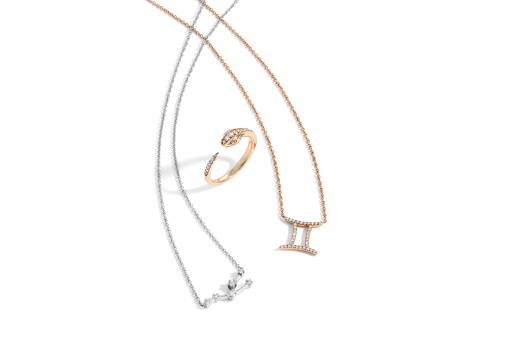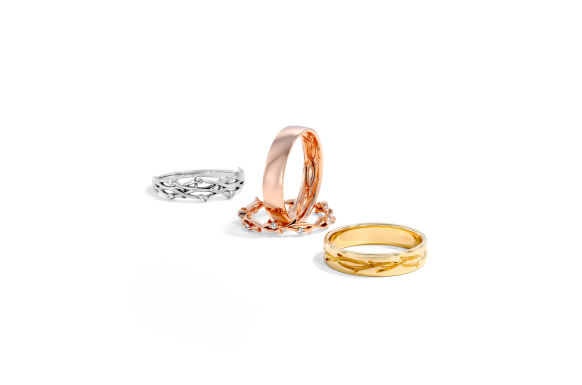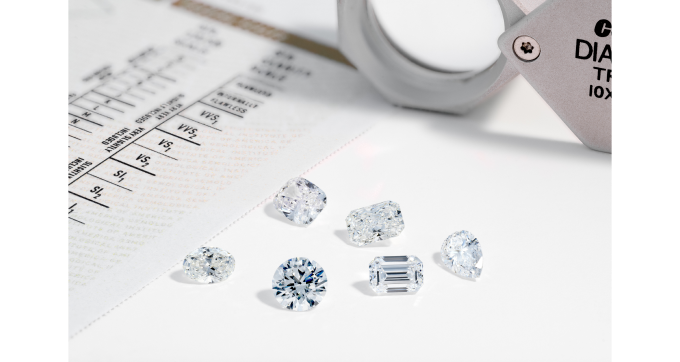Emeralds, the mesmerizing green gemstones, have enchanted people for centuries with their unparalleled beauty and rich cultural history. In recent years, these captivating gemstones have experienced a remarkable surge in popularity, particularly as center stones in engagement rings.
With their vibrant and luscious green hues, emeralds offer a striking and unique alternative to traditional engagement ring choices. One of the most renowned emerald engagement rings in recent history is the one owned by Wallis Simpson, the Duchess of Windsor. Presented by her fiancé, King Edward VIII, on October 27th, 1936, the stunning ring showcased a 19.77-carat step-cut emerald, elegantly surrounded by a halo of round diamonds. It later fetched a price of $1.6 million at auction.
What are Emeralds?
Emeralds are precious gemstones renowned for their captivating green color and unparalleled beauty. They belong to the beryl mineral family and get their vibrant green hue from trace amounts of chromium, vanadium, or iron in their crystal structure. The intensity and shade of the green can vary, ranging from delicate pastel greens to deep, rich, and intense greens.
Known for their remarkable transparency, emeralds can display stunning internal characteristics known as inclusions, which are sometimes referred to as "jardin" due to their resemblance to a garden.
Emeralds have a long and esteemed history, tracing back thousands of years to ancient civilizations such as the Egyptians, Aztecs, and Incas, who revered them for their symbolic and healing properties. These gemstones have been associated with love, harmony, and vitality, symbolizing deep emotional connections, balance, and growth. They are believed to enhance wisdom, intuition, and provide protection and healing properties. Additionally, emeralds are often linked to prosperity and abundance, representing wealth and good fortune.
In terms of durability, emeralds are relatively hard but can be more brittle compared to other gemstones. They rank 7.5 to 8 on the Mohs scale, indicating good durability for everyday wear, but they require careful handling and maintenance to protect them from potential damage.
Due to their beauty and rich symbolism, emeralds have gained immense popularity as center stones in engagement rings. Their distinctive green color adds a touch of elegance and individuality to any piece of jewelry, making them a sought-after choice for couples looking to celebrate their love with a touch of nature's mesmerizing allure.
How Are Emeralds Different From Diamonds?
Emeralds and diamonds are distinctly different gemstones in several ways:
-
Composition: Emeralds are a variety of the mineral beryl, while diamonds are composed of carbon atoms. The chemical composition of emeralds gives them their characteristic green color, whereas diamonds are transparent and colorless.
-
Color: Emeralds are renowned for their rich green color, ranging from light to dark shades. On the other hand, diamonds can be found in a variety of colors, but the most valued and sought-after diamonds are colorless or exhibit a white hue.
-
Hardness: Diamonds are the hardest known natural substance, scoring a perfect 10 on the Mohs scale of mineral hardness. In contrast, emeralds have a hardness rating of 7.5 to 8, making them more susceptible to scratches and potential damage.
- Rarity: While both emeralds and diamonds can be considered rare and valuable, the factors influencing their rarity differ. High-quality emeralds with vivid green color and minimal inclusions are relatively rare, whereas diamonds with exceptional clarity, color, and carat weight are highly coveted.
Lab-Grown Emeralds- Exquisite and Ethical
Lab-grown emeralds, also known as synthetic or cultured emeralds, are created in a laboratory environment using advanced techniques that simulate the natural processes that form emeralds deep within the Earth's crust. Unlike naturally occurring emeralds, which take thousands of years to form, lab-grown emeralds are produced within a shorter timeframe, typically a matter of weeks or months.
Lab-grown emeralds are created using a method called the flux process. In this process, a flux material containing the necessary elements is heated to high temperatures, allowing the emerald crystals to grow over time. Another method used is the hydrothermal process, where the crystals are grown in a water-based solution under specific temperature and pressure conditions.
The result of these laboratory processes is an emerald with the same physical and chemical properties as its natural counterpart. Lab-grown emeralds exhibit the characteristic vibrant green color and often possess remarkable clarity due to the controlled growth environment. They can also have fewer inclusions compared to natural emeralds, making them visually appealing.
Lab-grown emeralds offer you the opportunity to own a stunning and genuine emerald gemstone that is visually indistinguishable from its natural counterpart while embracing a responsible and environmentally conscious choice.
Are Lab-Grown Emeralds Real Gemstones?
Yes, lab-grown emeralds are considered real gemstones. They possess the same chemical composition and crystal structure as natural emeralds. The main difference is the origin: lab-grown emeralds are created in a laboratory environment through a process that mimics the natural conditions under which emeralds form. These lab-grown emeralds exhibit the same physical and optical properties as natural emeralds, making them a viable alternative for those seeking an ethically and environmentally conscious choice.
Price Points: Real vs. Lab-Grown Emeralds
Lab-grown emeralds tend to be more affordable compared to natural emeralds. The cost of natural emeralds is influenced by factors such as rarity, quality, size, and origin: those with exceptional color, clarity, and size can command high prices.
On the other hand, lab-grown emeralds, while possessing similar visual and chemical properties, are generally more affordable due to their controlled production process and relatively higher availability. This makes lab-grown emeralds a cost-effective option for those seeking the beauty and characteristics of emeralds at a lower price point.
Advantages of Emerald Engagement Rings
Choosing a lab-grown emerald for your engagement ring offers several advantages that make it an attractive choice. Here are some key advantages:
-
Excellent Value: Lab-grown emeralds typically offer excellent value for your investment. Compared to naturally mined emeralds of similar quality, lab-grown emeralds are often more affordable, allowing you to obtain a larger or higher-quality gemstone for your budget.
-
Highly Personalized: Lab-grown emeralds offer a singular and special touch to your engagement ring. Each gemstone is created with precision, allowing you to choose an emerald with the exact carat weight that resonates with your personal style and preferences. You can take rings like The Twig and The Lenny and add an emerald to design your own one-of-a-kind ring.
-
Ethical and Environmentally Friendly: Lab-grown emeralds are created in controlled laboratory settings using advanced technology, eliminating the need for mining. This ensures a smaller environmental footprint and eliminates potential ethical concerns associated with mining practices, making lab-grown emeralds a sustainable and responsible choice.
-
Color and Clarity: Lab-grown emeralds often exhibit vibrant and intense green colors, with exceptional clarity and fewer inclusions compared to their natural counterparts. The controlled growth environment allows for the production of emeralds with consistent color and superior visual appeal.
- Durability: Lab-grown emeralds possess the same hardness and durability as natural emeralds, making them suitable for everyday wear. They can withstand the rigors of daily life, ensuring that your engagement ring remains as beautiful as the day you first received it.
Through our advanced laboratory processes, Keyzar produces emeralds of exceptional quality, capturing the mesmerizing green hues and natural characteristics that make emeralds so alluring. Our lab-grown emeralds meet the highest standards, allowing couples to embrace the beauty of these ethically and environmentally conscious gemstones in their engagement rings, symbolizing love and commitment in a stunning and sustainable way.
Conclusion
With their vibrant colors, remarkable clarity, and responsible sourcing, lab-grown emeralds allow you to embrace a one-of-a-kind engagement ring while making an environmentally conscious choice.
At Keyzar, you can design the emerald engagement ring of your dreams using our powerful and intuitive platform. You can choose every aspect, from the setting style to the band metal, resulting in a one-of-a-kind ring that reflects your unique taste. It’s a beautiful and personal way to celebrate your love with the enchanting beauty of emeralds, a gemstone that even royalty couldn’t resist.






